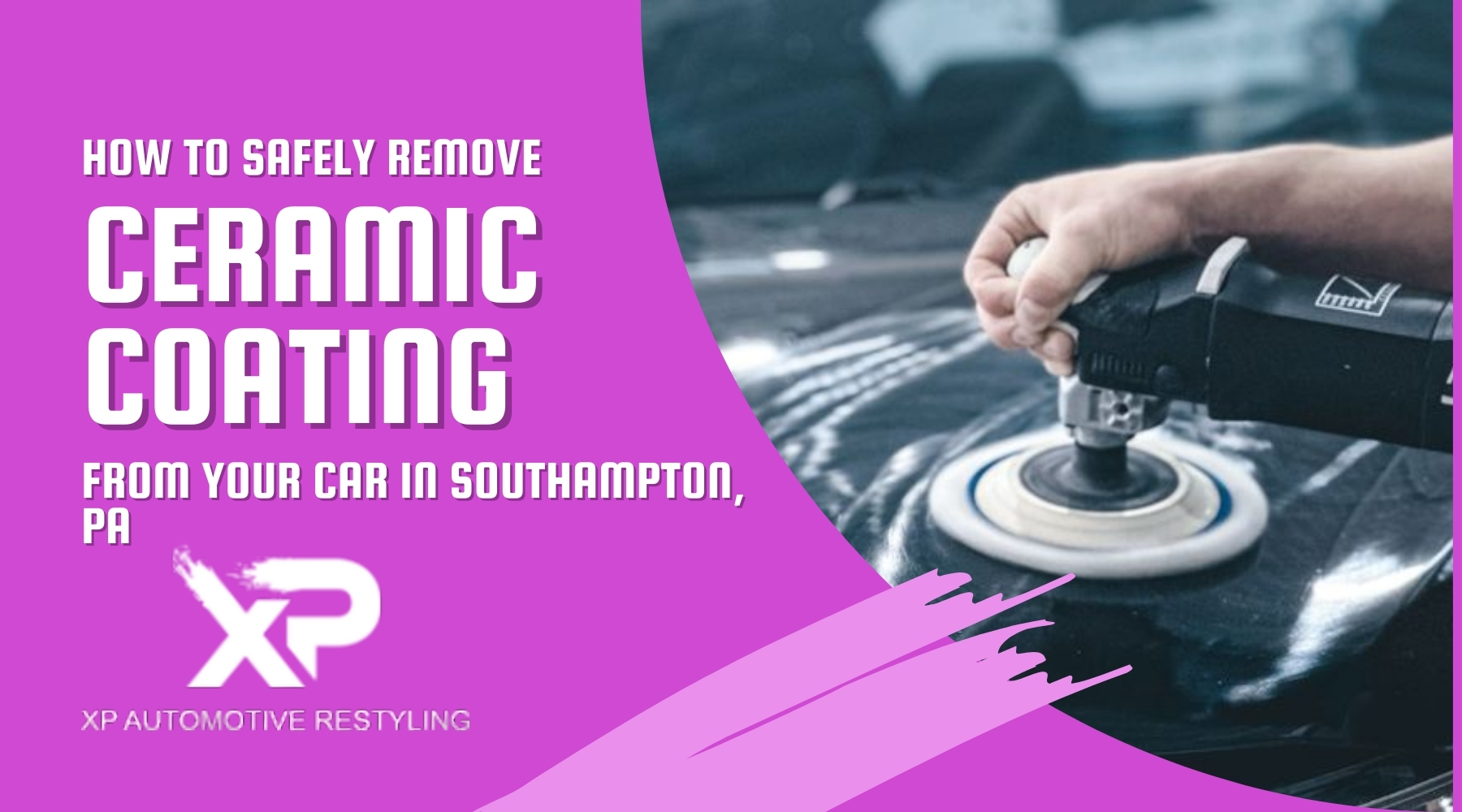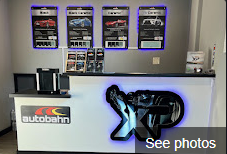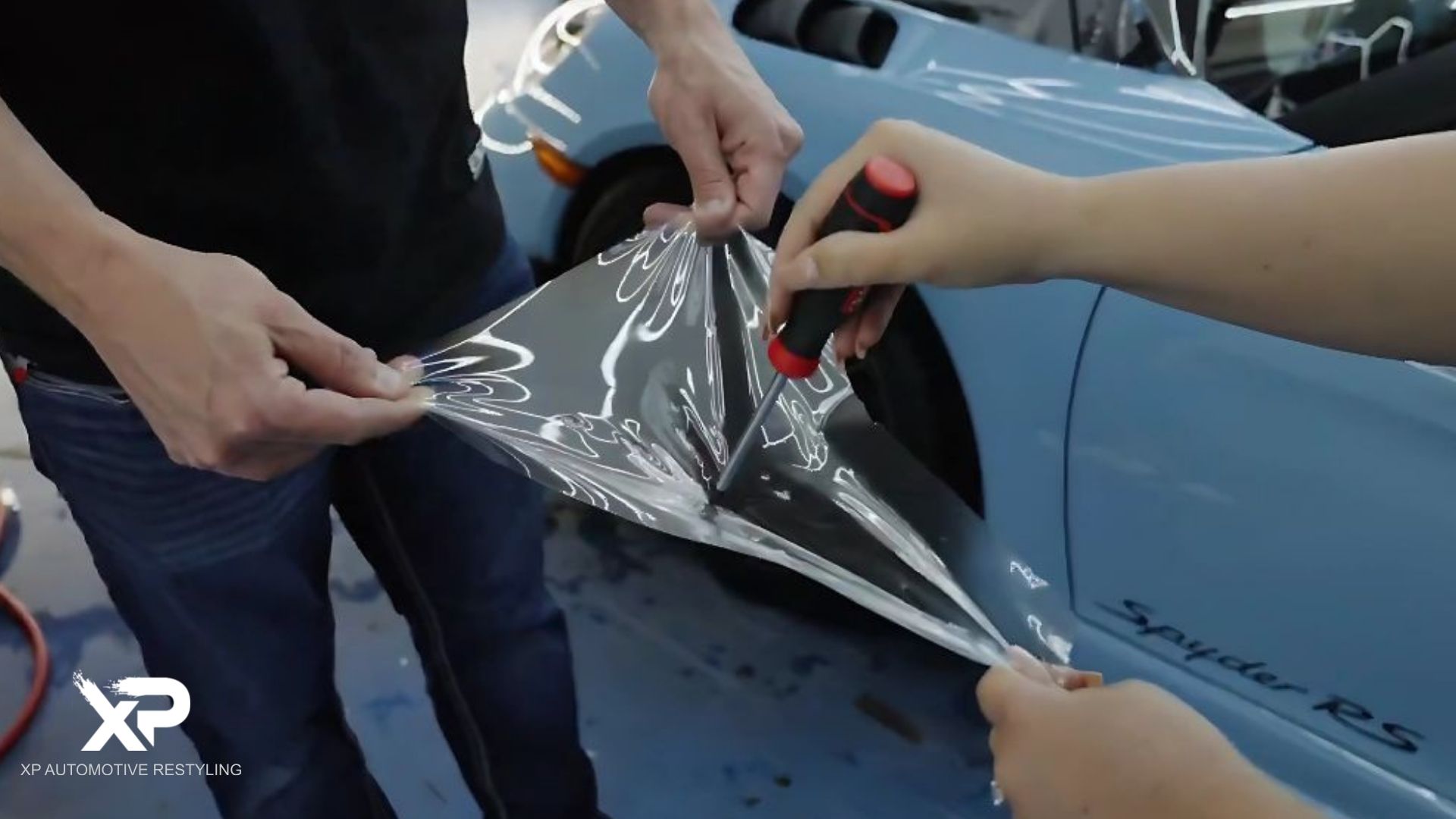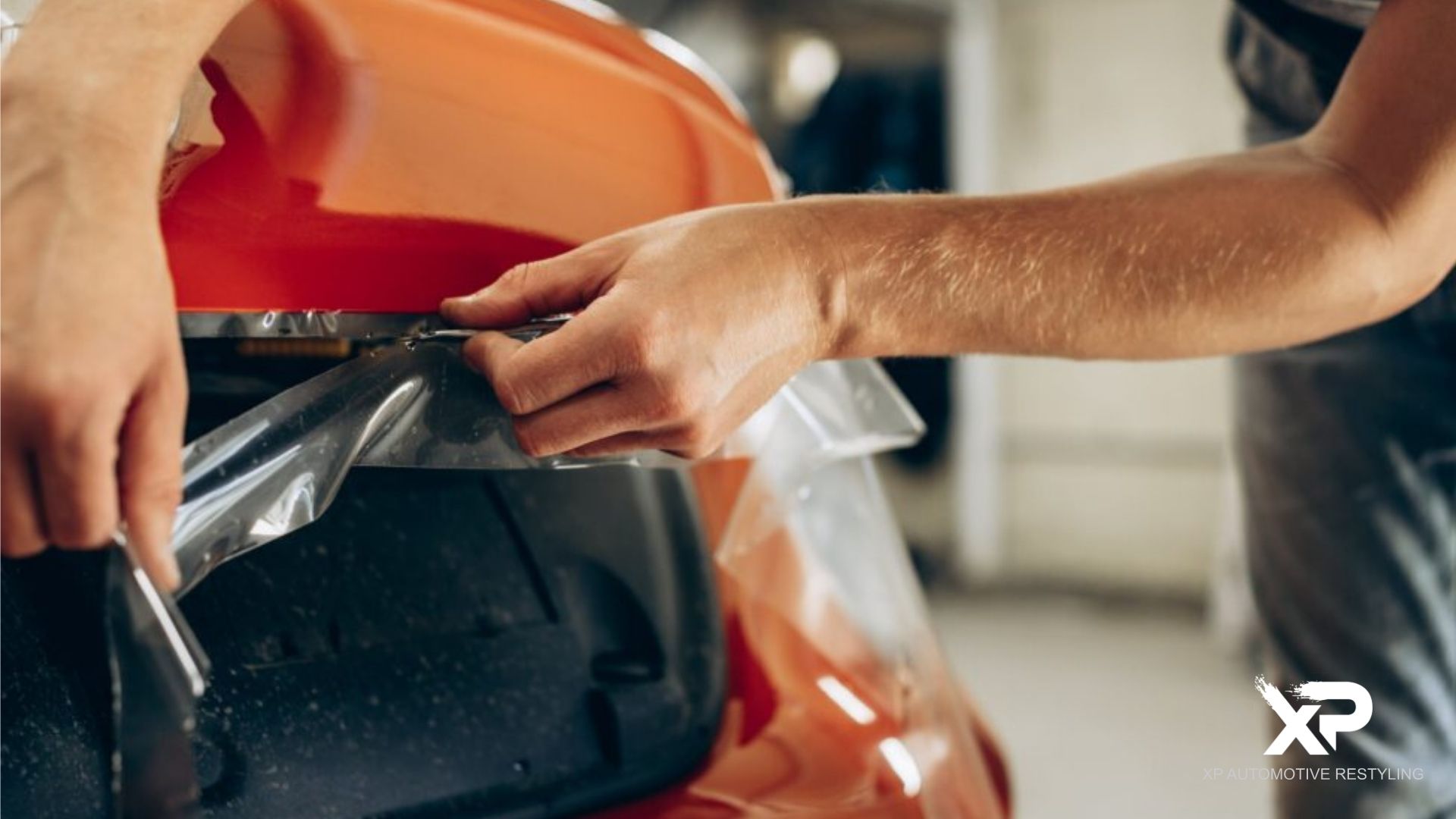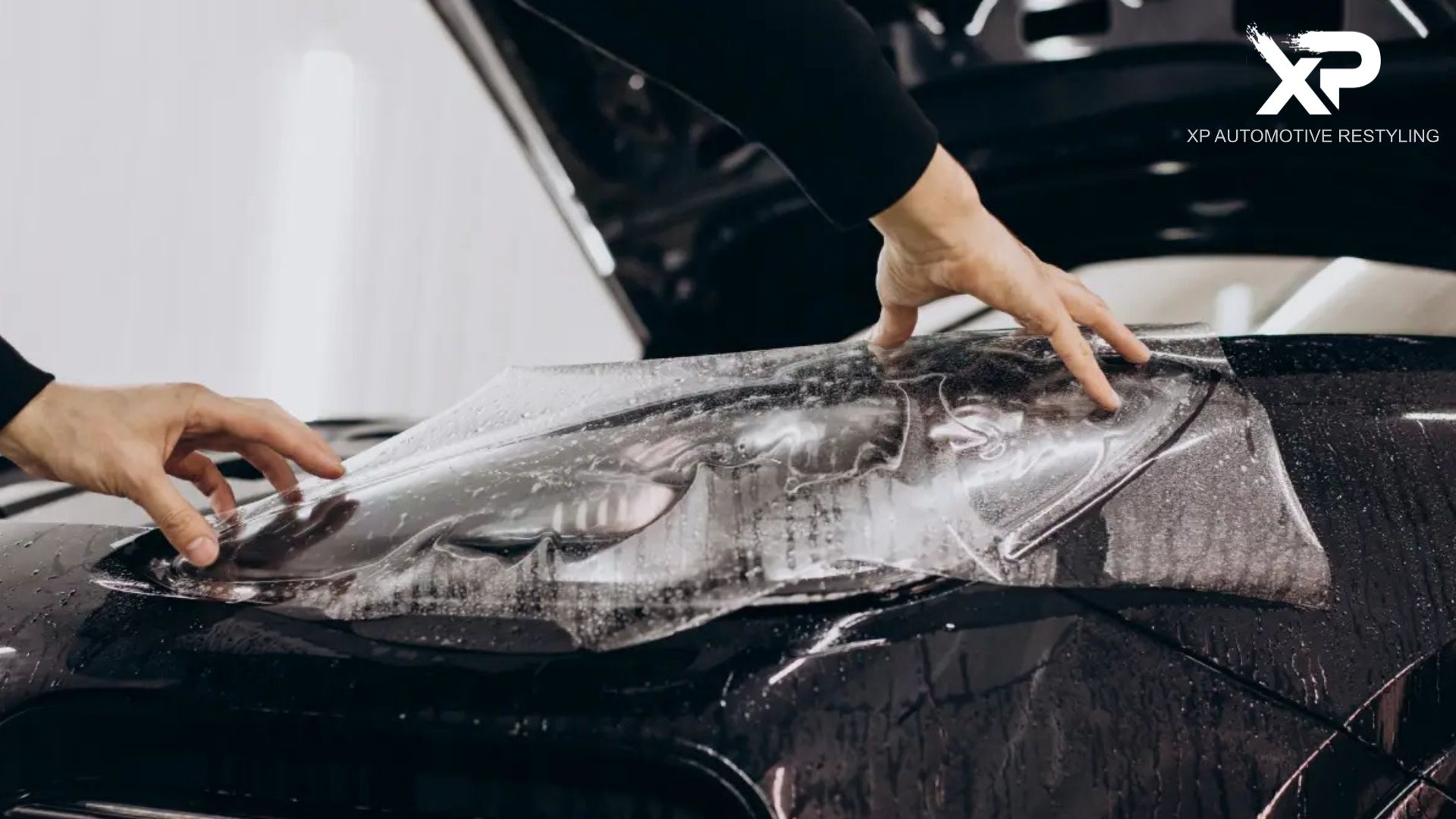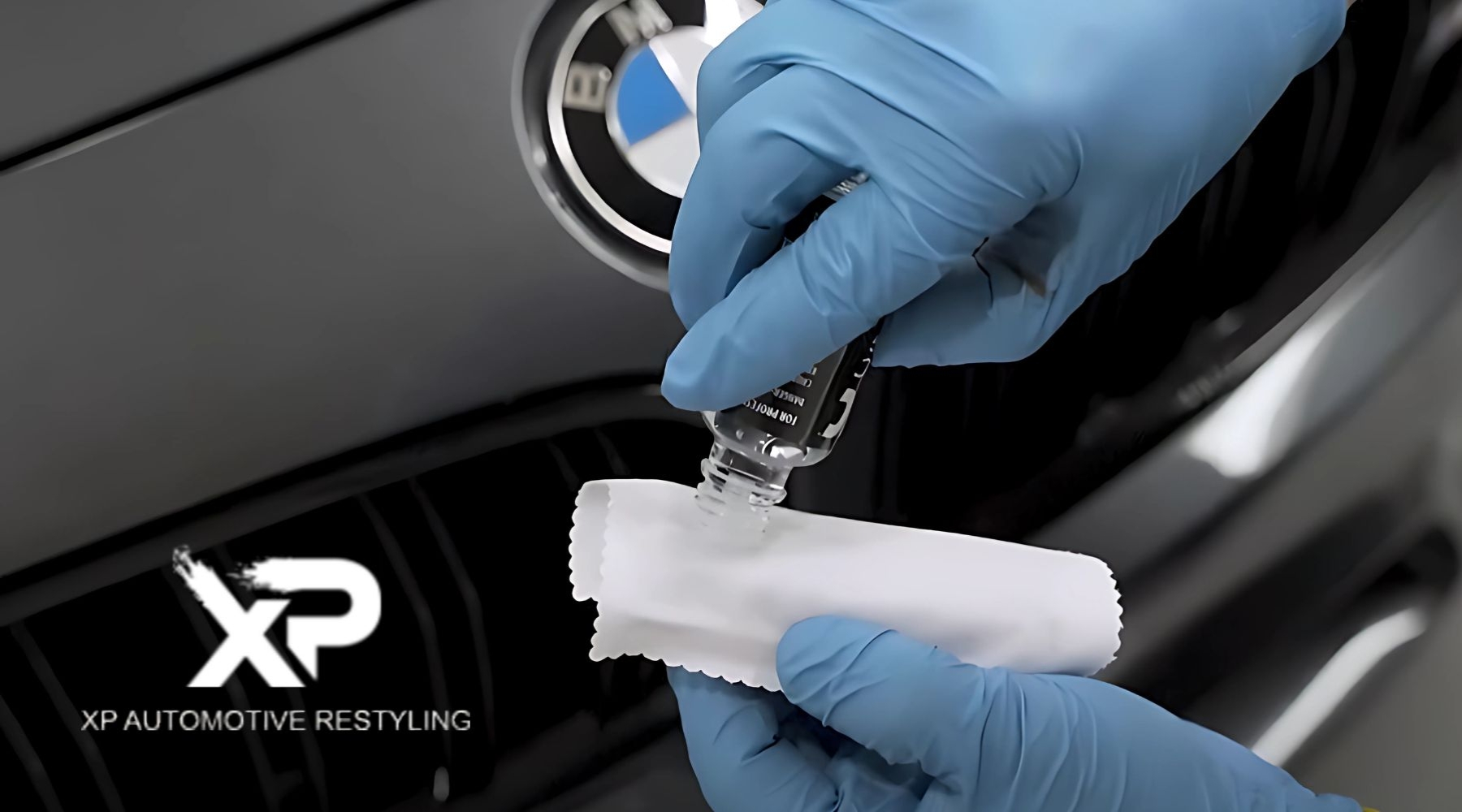Ceramic coating is a remarkable advancement in car care, providing long-lasting gloss, water beading, and paint protection that outperforms traditional waxes and sealants. But what happens when it’s time to remove it? Whether you’re preparing for a reapplication or correcting a poor installation, knowing how to safely remove ceramic coating is crucial to prevent damage to your paint.
This guide breaks down the safest and most effective methods for removing ceramic coating on cars in Southampton, PA, including when to tackle it yourself and when to leave it to professionals like XP Automotive Restyling.
Why Remove Ceramic Coating?
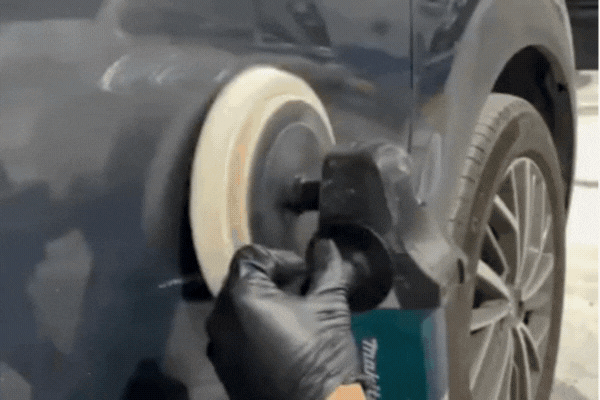
Ceramic coatings, like those offered in the Silver and Gold Packages at XP Automotive Restyling, are engineered to protect your car’s paint for 2–6 years. However, there are several practical reasons why you might need to remove the coating before that lifespan ends:
- The coating was improperly applied – Issues like high spots, uneven flash curing, or streaking can leave your vehicle looking patchy or hazy.
- Loss of hydrophobic effects – Over time, exposure to harsh weather, automatic car washes, and poor maintenance can degrade the coating’s performance.
- Reapplication of a higher-grade coating – Upgrading to a longer-lasting or more advanced formula requires a clean, coating-free surface to ensure proper bonding.
- Paint correction or bodywork – Any polishing, sanding, or repainting will require the removal of existing protection layers.
Removing ceramic coating is not as simple as washing it off. Most coatings use SiO₂ (silicon dioxide), a durable compound that chemically bonds to your vehicle’s clear coat.
This makes improper or partial removal risky, as it can result in poor adhesion for new coatings or trap imperfections beneath the surface. Incomplete removal can also leave your paint vulnerable to contamination, oxidation, or further damage.
For this reason, understanding the right methods or turning to professionals is key to preserving your vehicle’s finish and ensuring a flawless reapplication.
Step-by-Step: How to Remove Ceramic Coating Safely

1. Wash and Decontaminate the Surface
Start with a strip wash using a high-pH or wax-stripping shampoo. This breaks down surface grime and weakens the bond between the coating and its substrate.
Pro Tip: Use a foam cannon, microfiber mitt, and the two-bucket method to avoid scratching the paint.
Next, decontaminate using a clay bar or clay mitt with lubricant. This removes embedded particles that strip washes can’t reach.
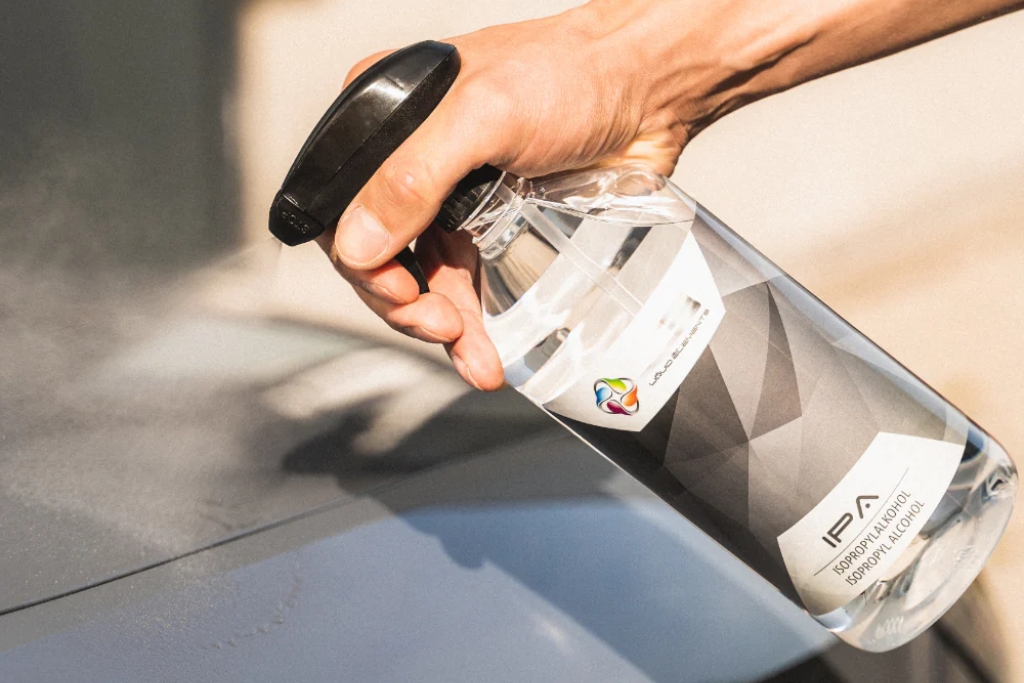
2. Test for Coating Removal
Before moving to aggressive methods, test a small area.
- Spray 70% isopropyl alcohol (IPA) on the surface.
- Observe water behavior; if it beads, the coating is still present; if it sheets, it’s likely gone.
Testing in small areas ensures you’re not over-correcting or damaging the clear coat. It’s also why inspecting under bright or direct lighting is essential.
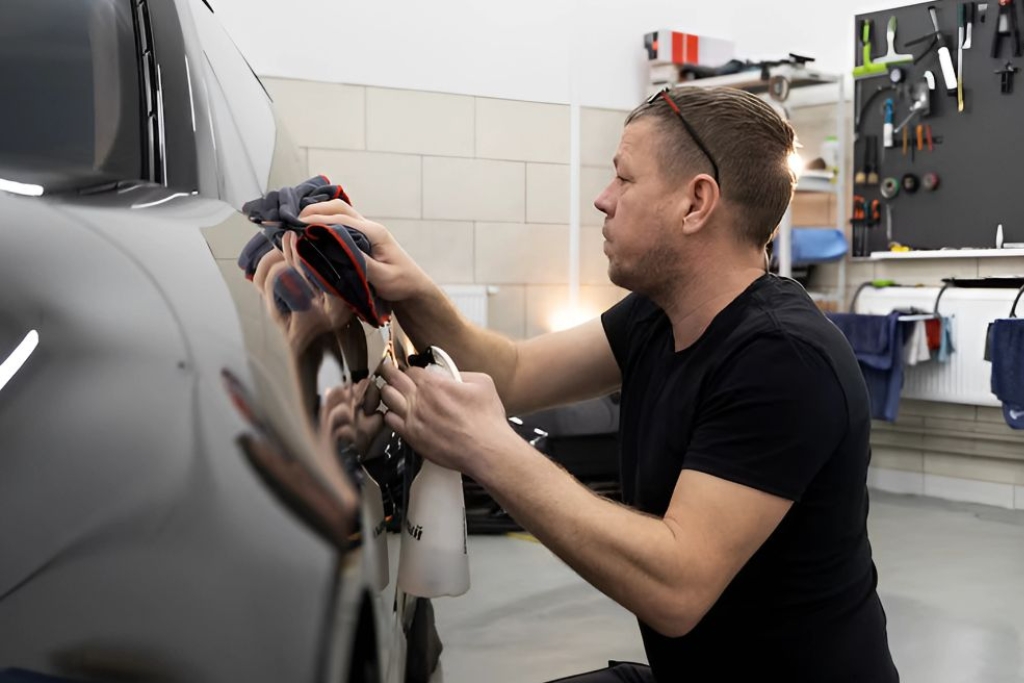
3. Use Chemical Strippers (with caution)
Chemical strippers for ceramic coatings are available, but they should be used with caution. Some detailers use degreasers, wheel cleaners, or specialty ceramic coating removers designed to soften the SiO₂ layer.
Warnings:
- Overuse or long dwell times can harm your paint’s clear coat.
- Not all coatings respond well to chemical methods, especially professional-grade types like those installed at XP Automotive Restyling.
If you’re unsure which chemicals are safe, consult with professionals before applying them.
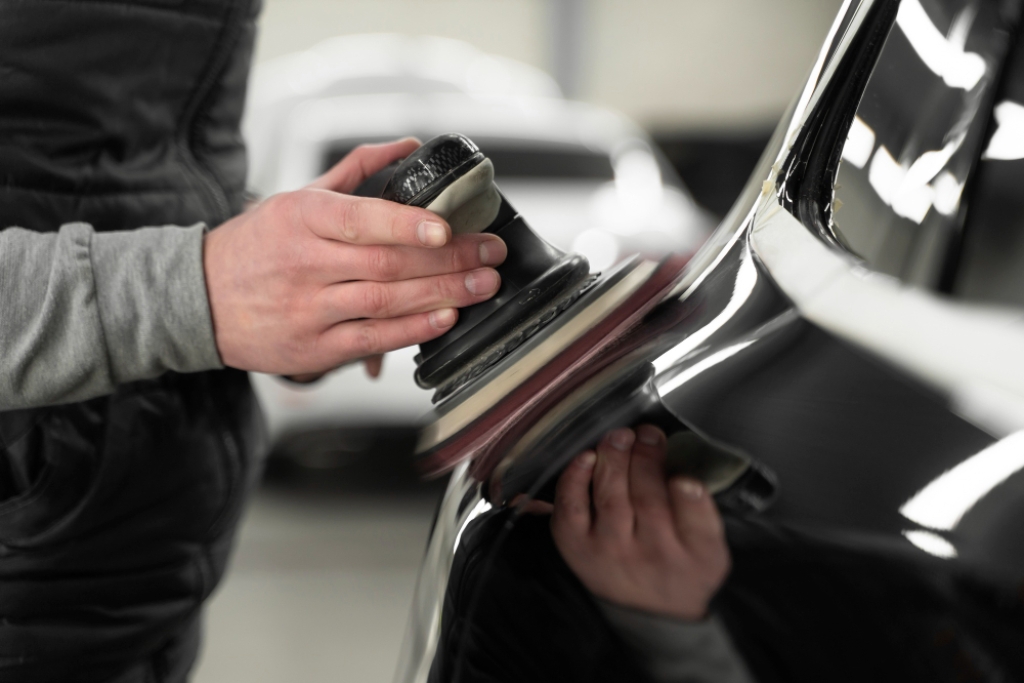
4. Mechanical Abrasion (Polishing or Cutting)
If the coating resists chemical stripping, abrasive polishing is your next step.
- Use a dual-action polisher with cutting compounds.
- Choose polishing pads based on the coating’s strength (finishing pad for consumer-grade, compounding pad for professional-grade).
- Work in small sections, applying even pressure and overlapping passes to ensure a smooth finish.
This method is very effective but requires skill. Incorrect pad choice or pressure can result in clear coat damage, especially on softer paints.
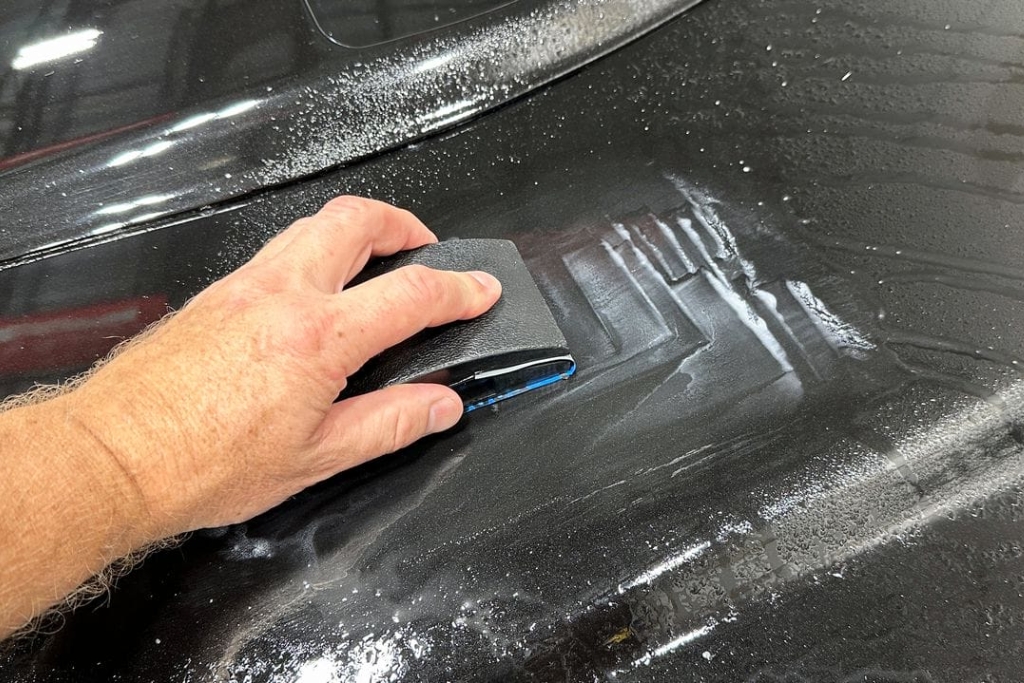
5. Wet Sanding (Use Only as Last Resort)
For stubborn coatings, especially those with thick or uneven applications, wet sanding may be necessary. Use 2000 to 3000 grit sandpaper with proper lubrication.
Note: Wet sanding removes part of the clear coat and should only be performed by trained professionals. It’s rarely necessary unless dealing with extremely high spots or multi-layered coatings.
No matter which option you choose, XP Automotive Restyling ensures a seamless installation process that meets all local regulations in Southampton, PA.
When to Seek Professional Help
If you’re unsure about any step or dealing with a professional-grade coating, it’s best to consult an expert before risking potential paint damage.
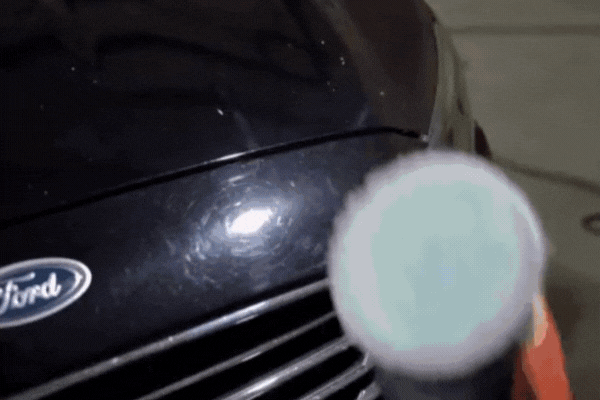
At XP Automotive Restyling in Southampton, PA, their trained technicians have the tools, experience, and controlled environment needed to safely and effectively remove ceramic coatings. They utilize advanced paint correction techniques, machine polishers, and tailored abrasives to ensure that your vehicle’s clear coat remains intact during the removal process.
In addition to removal, XP Automotive Restyling provides professional reapplication services using high-performance ceramic coatings engineered for long-lasting protection, deep gloss, and superior hydrophobicity.
Whether your coating is failing, improperly applied, or you’re simply ready for an upgrade, professional removal ensures the job is done right the first time, without guesswork or damage.
Discover how ceramic coatings function and why expert handling is crucial.
Play It Safe
Removing a ceramic coating isn’t as simple as using soap and water; it’s a process that demands knowledge, patience, and the right tools. Choosing the wrong method or using aggressive products can result in swirl marks, hazing, or even permanent damage to the clear coat.
While DIY ceramic coating removal is possible for lighter, consumer-grade coatings, it’s not always the best route, especially if you’re working with professional-grade formulas or are uncertain about the condition of your vehicle’s paint.
If you’re in Southampton, PA, put your trust in the pros at XP Automotive Restyling. Their expert team uses industry-best practices and precision equipment to ensure safe removal and flawless reapplication. With years of experience in detailing, paint protection, and ceramic coatings, they’ll help your car not only recover its finish but also elevate it.
Related Reading
Frequently Asked Questions
What is the fastest way to remove ceramic coating?
Machine polishing with a cutting compound is typically the quickest and most effective method, especially when performed by professionals.
Will rubbing alcohol remove ceramic coating from a car?
No, IPA is useful for testing removal, but not for removing the coating itself.
Does detailing remove ceramic coating?
Standard detailing may not, but professional paint correction and machine polishing services can.
Will Dawn remove ceramic coating?
Dawn can help strip waxes or sealants, but it won’t break down professional ceramic coatings.
Why is a chemical stripper not enough for strong coatings?
High-quality coatings bond tightly to the paint and resist mild chemicals. Mechanical removal is often needed.
Why do many DIY methods fail?
Lack of proper tools, insufficient polishing techniques, and underestimating the coating’s strength often lead to incomplete removal.
Why does mechanical abrasion risk damaging paint underneath?
Excessive polishing or improper use of the wrong pad or compound can burn through the clear coat and reach the paint layer.
Why should you test on a small area first?
To minimize risk, especially if you’re unsure of the coating type or the vehicle’s paint condition.
Why is inspecting under proper light important?
It helps detect remaining coating, swirl marks, or high spots that aren’t visible in low light.
